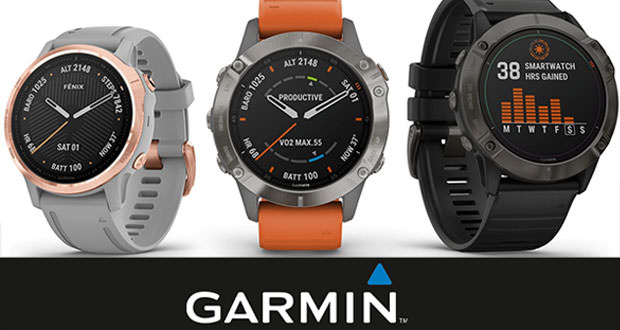The future of Garmin Smartwatches: technology and design based on health
The evolution of smartwatches Garmin is increasingly moving towards an expansion of users, with technology that is available not only to those who do sports but more generally to those who want to keep track of their health.
At the 2019 IFA edition, Garmin announced important news, followed by a few days after the official debut of the Fenix 6 smartwatch series. Alongside the new series of sportwatches for mountain enthusiasts, we find the Venu, Vivomove 3 and Vivoactive 4 models to compose a family of solutions that meets the typical needs of the most diverse users.
We had the opportunity to discuss with Chris Pemble, President and CEO of the American company, about the evolution that Garmin has recorded and what is the direction in which it is heading. It seemed evident, both from the announcements of the IFA and from the recent history of the company, as the evolution developed by Garmin also passes through the creation of products that are not necessarily adapted to the public of the most passionate.
This Vivomove 3 stands out, a smart product that can be easily confused with a traditional wristwatch, but that integrates all of a series of advanced features linked to both tracking activity and monitoring of health status.
A fundamental role of all this is linked to the heartbeat sensor integrated in the back, responsible not only to analyze the heartbeat but also a basic tool to perform advanced analyzes related to its energy efficiency, sleep quality and stress level.
The technology implemented in this product, as in the others of the Garmin range, is functional to the analysis of sporting activity but plays an even more important role in keeping track of the quality of life of the wearer.
” Garmin is a company with a strong sense of adventure ” : this is the definition provided by the CEO about his company. And we must acknowledge that words are well chosen, as Garmin has for many years been synonymous with time spent outdoors in devoting some kind of sporting activity.
On the other hand, Garmin also looks to the future, made of a progressive expansion of its customer base: a more than legitimate business choice, but in this case, it also combines considerations related to the desire to provide everyone with tools that can better monitor your physical well-being.
The technology developed by the company thus becomes a way through which to combine the historical sporting and outdoor activities with that of health and physical well-being.
It is not surprising to see not only mid-range products designed for audiences other than those typical of smartwatches, such as the Vivomove 3 range mentioned above, but also to see Garmin move upwards in the direction of more traditional watchmaking products for both design that for cost. Change the commercial structure, which must be adapted to an audience that is not that of the sportsman or the typical buyer of a sportwatch.
It is a journey of not simple commercial expansion that required to operate on channels that do not typically deal with smartwatches, but that is progressively allowing Garmin to present and offer its products to a different clientele.
The MARQ product range, presented by Garmin last spring, is a clear example: these are smartwatches that leverage the technology implemented in the products of the Fenix families by offering an even higher-quality finish, all combined with specific features for well defined target users.
Pemble sees a future expansion of Garmin towards this category of products, without prejudice of course the main focus that remains to offer products and technologies that can respond to the broadest spectrum of users looking for a smartwatch.
The functions that modern smartwatches integrate in their interior are more and more numerous, but they are all designed to look inside the user: trace their activities, provide information on messages and notifications from their smartphone, monitor their heart rate and the parameters of vital functioning.
The future evolution will surely lead to new functionalities parallel to what has already been implemented, but one wonders if the smartwatches kept on the wrist and not necessarily connected to a smartphone can also become a door for external communication.
Garmin is working in this direction and already, with the spread of Garmin Pay within its latest smartwatches, it offers a service that uses the smartwatch as a tool for outward transmission. That’s not all: Chris Pemble couldn’t give us (and wanted to) provide specific details, but it’s clear that Garmin is already working, even through agreements and collaborations with other companies, to offer tools and services that go in this direction.
The CEO has unbalanced himself by imagining a near future with which a smartwatch will be able to be recognized by his car, which will open when the engine is started. A not so futuristic scenario, but that suggests how smartwatches can evolve in the future becoming more and more complex, independent of other devices and why not also beautiful to wear and show.
Product prices and availability are subject to change. Any price and availablility information displayed on Amazon at the time of purchase will apply to the purchase of any products.


